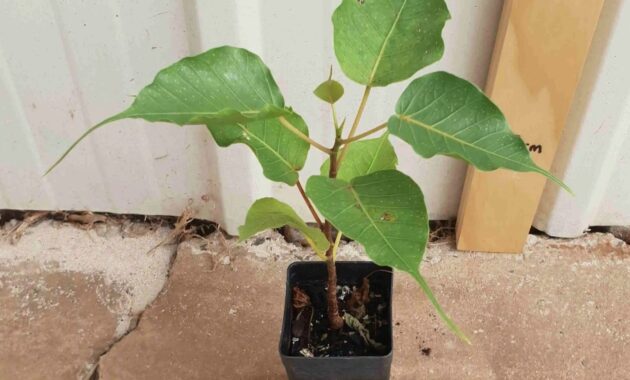
The Ficus religiosa, commonly known as the Sacred Fig Tree or Bodhi Tree, holds immense cultural, religious, and medicinal significance. This majestic tree, revered by millions, offers a wealth of benefits, from spiritual enlightenment to physical well-being. Let’s delve into the fascinating world of the Ficus religiosa.
What is Ficus Religiosa?
The Ficus religiosa is a large, evergreen tree native to the Indian subcontinent. It’s easily recognizable by its heart-shaped leaves, which are often depicted in religious art and symbolism. This tree is particularly revered in Buddhism as it was under its shade that Gautama Buddha attained enlightenment.
Ficus Religiosa Benefits
The Ficus religiosa offers a myriad of benefits, both physical and spiritual:
- Medicinal Properties:
- Anti-inflammatory: The leaves and bark possess anti-inflammatory properties, making them useful in treating various inflammatory conditions.
- Antioxidant: The antioxidants in the tree help combat oxidative stress, protecting cells from damage.
- Antimicrobial: The tree exhibits antimicrobial activity, aiding in the fight against infections.
- Digestive Aid: The leaves and bark can help alleviate digestive issues like constipation and indigestion.
- Respiratory Health: The tree’s leaves can be used to treat respiratory ailments such as asthma and bronchitis.
- Spiritual Significance:
- Symbol of Enlightenment: The tree is deeply revered in Buddhism as the site of Buddha’s enlightenment.
- Positive Energy: Many believe that the tree emits positive energy, promoting peace and tranquility.
- Meditation Aid: The serene atmosphere under the tree creates an ideal environment for meditation and spiritual practices.

How to Grow Ficus Religiosa
Growing a Ficus religiosa can be a rewarding experience. Here’s a simple guide:
- Choose a Suitable Location: Select a spot with bright, indirect sunlight. Avoid direct, intense sunlight, as it can scorch the leaves.
- Prepare the Soil: Use well-draining, fertile soil. A mixture of potting soil and perlite or sand works well.
- Planting: Plant the young sapling in the prepared soil, ensuring that the roots are spread out.
- Watering: Water the plant regularly, keeping the soil moist but not waterlogged. Reduce watering during the winter months.
- Fertilizing: Fertilize the tree once a month during the growing season with a balanced liquid fertilizer.
- Pruning: Prune the tree to maintain its shape and remove any dead or diseased branches.
Ficus Religiosa Care Tips
- Sunlight: While the tree prefers bright, indirect light, it can tolerate some shade.
- Watering: Water deeply but infrequently, allowing the soil to dry slightly between waterings.
- Humidity: The tree thrives in humid environments. Misting the leaves occasionally can help maintain humidity.
- Temperature: The tree prefers warm temperatures, but it can tolerate mild cold.
- Pests and Diseases: Watch out for common pests like mealybugs and scale insects. Treat infestations promptly.
Ficus Religiosa Bonsai
Ficus religiosa can be trained into stunning bonsai trees. Here’s how to care for a Ficus religiosa bonsai:
- Watering: Water regularly, ensuring the soil is moist but not soggy.
- Fertilizing: Fertilize the bonsai every other week during the growing season.
- Pruning: Prune regularly to maintain the desired shape and size.
- Wiring: Use wire to shape the branches and trunk.
- Repotting: Repot the bonsai every 2-3 years to refresh the soil and roots.
Ficus Religiosa Symbolic Meaning
The Ficus religiosa holds profound symbolic meaning in various cultures:
- Enlightenment: The tree symbolizes spiritual awakening and enlightenment.
- Knowledge: The tree is associated with wisdom and knowledge.
- Longevity: The tree’s long lifespan represents longevity and immortality.
- Peace and Tranquility: The serene atmosphere under the tree promotes peace and calmness.

Where to Buy Ficus Religiosa Plant
You can purchase Ficus religiosa plants from local nurseries, online plant retailers, or botanical gardens. When buying, choose a healthy plant with vibrant, green leaves.
Conclusion
The Ficus religiosa is more than just a tree; it’s a symbol of spirituality, a source of medicinal benefits, and a beautiful addition to any landscape. By understanding its care requirements and symbolic significance, you can cultivate a deep connection with this sacred tree.
FAQs
- Can I grow Ficus religiosa indoors?
Yes, you can grow Ficus religiosa indoors, but it will - Can I grow Ficus religiosa indoors?
Yes, you can grow Ficus religiosa indoors, but it will require careful attention to its needs, especially in terms of light and humidity. Place it near a bright window and mist the leaves regularly to maintain humidity. - How often should I repot my Ficus religiosa?
Repot your Ficus religiosa every 2-3 years, or when the roots become pot-bound. Choose a slightly larger pot and fresh, well-draining potting mix. - What are the common pests and diseases that affect Ficus religiosa?
Common pests include mealybugs, scale insects, and spider mites. To control them, use insecticidal soap or neem oil. Fungal diseases like root rot can occur if the plant is overwatered. Ensure proper drainage to prevent this. - Can I propagate Ficus religiosa from cuttings?
Yes, you can propagate Ficus religiosa from stem cuttings. Take a healthy stem cutting, remove the lower leaves, and dip the cut end in rooting hormone. Plant the cutting in a pot with well-draining soil and keep it moist.



